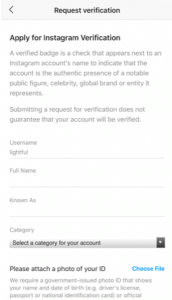How To Use Audience Data To Maximize Marketing Spend
In its 2018 Digital Marketing Trends Report, AdMaster found that 70% of advertisers plan to increase our digital marketing budgets for 2018. But what do we plan to do with that money?
The biggest thing to remember is marketers should target people, not just cookies. Behavioral targeting is important, but audience data is even better.
Audience data covers several elements, and they all start with first-party data. Only we know what separates our best customers from both our lapsed and potential customers. The more we understand our data and the more robust it is, the more effectively we can allocate our marketing budgets.
To do this, we must break down lists by past purchase behaviors, inclinations to engage, geography, or anything that will help us sell. By blending our first-party insights with third-party supplementation, we can ensure our marketing budgets go toward the most effective activities.
Where Marketers Go Wrong With Data
Customers touch companies in several places. So why does any of us limit our audience marketing budgets to last-click performance? Limiting audience targeting by channel leads to the same conversations with the same people over and over. That’s not an acquisition strategy; it’s an annoyance strategy.
In audience marketing, the money should go where the people are. On the front end, we should focus on KPIs associated with acquisition, such as engagement rates and the path to purchase. In-store companies should continue that tracking offline. Making the connection between online activity and offline purchases gets tricky, but it’s possible and necessary to understand the true ROI of online marketing.
How to Allocate Marketing Budget by Audience
Consumers are not all created equal. When we break down our budgets using audience data, we should allocate money toward the most effective tactics:
1. Stop budgeting by channel. Most companies have separate budgets for paid search, paid social, etc. However, that channel-based budget doesn’t properly account for audience activity. Instead of limiting our budgets by channel, we should start focusing on audience buckets throughout the funnel. Target current customers with one part of the budget, new customers with another. Let the audience determine channel spend, not vice versa.
2. Respect current customers. Brands tend to limit current customer engagement to email. Don’t. Show current customers love across several channels, including social media, using separate budgets to do so. This increases customer loyalty while maximizing the effectiveness of marketing spend.
3. Think beyond last click. When we invest in acquisition, we have to remember that customers never convert through one channel with only one click — it’s a journey. We should use data to follow consumers and to create lookalike audiences. The KPIs will be different, but that’s good: It’s a sign of a more thoughtful and holistic marketing strategy.
4. Leave room to be flexible. If something works well in one area, move some money from a less-effective area to double down on that tactic. Reserve a few percentage points of the budget to test new strategies. Investing in innovation helps us continually improve the effectiveness of our marketing spend.
Different audiences require different approaches. Don’t let the marketing budget limit engagement and conversions. Use audience data to get more for your money.
(26)
Report Post




